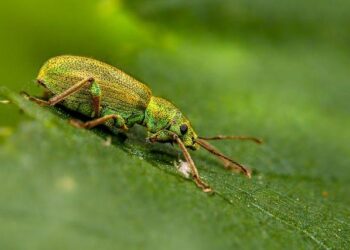Estonia is set to bolster its efforts to contain the ongoing African Swine Fever (ASF) outbreak by acquiring advanced thermal imaging drones specifically designed to track wild boar populations. The move, announced by government officials, aims to enhance surveillance capabilities and support targeted hunting operations to curb the spread of the highly contagious animal disease that poses a significant threat to the country’s swine industry. This investment reflects Estonia’s commitment to leveraging cutting-edge technology in its fight against ASF, which has caused severe economic and ecological impacts across the region.
Estonia Enhances ASF Surveillance with Advanced Thermal Imaging Drones
To combat the escalating African Swine Fever (ASF) outbreak, Estonian authorities are equipping hunters with state-of-the-art thermal imaging drones. This cutting-edge technology enables more efficient monitoring of wild boar populations across dense forests and challenging terrains. By capturing heat signatures in real-time, drones can swiftly identify infected animals, allowing for quicker responses and targeted containment efforts. This approach represents a major leap forward from traditional ground surveillance methods, which have often been hindered by limited visibility and slow detection times.
Key advantages of the thermal imaging drone program include:
- Night and low-visibility operations: Thermal sensors excel in detecting heat even in dark or foggy conditions.
- Wide-area coverage: Drones can survey large swathes of forest rapidly, minimizing manpower requirements.
- Non-invasive tracking: Birds and animals are less likely to be disturbed compared to physical search parties.
| Feature | Benefit | Expected Impact |
|---|---|---|
| Thermal Imaging Cameras | Accurate heat detection | Early identification of ASF carriers |
| Drone Mobility | Access remote areas | Comprehensive surveillance coverage |
| Real-time Data Transmission | Immediate alerts to hunters | Faster containment action |
How Hunters Thermal Imaging Technology Will Improve Early Detection of African Swine Fever
Leveraging cutting-edge thermal imaging drones offers a transformative approach to combating African Swine Fever (ASF) by enabling earlier and more accurate identification of infected wild boars. These drones, equipped with high-resolution thermal sensors, can detect subtle temperature variations in dense forests and challenging terrains, where traditional surveillance methods frequently fall short. Early detection is critical in preventing the rapid spread of ASF, and the drones’ ability to scan large areas quickly and with minimal human intervention dramatically enhances response efficiency.
Key advantages of hunters’ thermal imaging technology include:
- Improved range and accuracy: Detects infected animals even at night or in obscured environments.
- Rapid coverage: Enables surveillance of vast wilderness zones in hours rather than days.
- Reduced risk to personnel: Minimizes human contact with potentially infected wildlife.
- Real-time data transmission: Facilitates instant decision-making and targeted containment efforts.
| Feature | Benefit | Impact on ASF Control |
|---|---|---|
| Thermal Sensitivity | Detects subtle heat signatures | Identifies feverish wild boars early |
| Drone Mobility | Accesses remote areas swiftly | Expands surveillance reach |
| Data Connectivity | Real-time monitoring | Accelerates containment measures |
Expert Recommendations for Integrating Drone Surveillance into National Wildlife Health Strategies
Experts emphasize the critical role of thermal imaging drones in providing real-time data for controlling outbreaks such as African Swine Fever (ASF). These unmanned aerial vehicles enable hunters and wildlife health officials to monitor vast forested areas with precision, detecting infected or distressed animals faster than conventional ground patrols. Enhanced surveillance capabilities improve response times, helping to contain and mitigate disease spread before it escalates, while reducing risks to field personnel.
Successful integration involves a multi-disciplinary approach blending technology, wildlife biology, and disease ecology. Key recommendations include:
- Training for drone operators focused on disease detection indicators and ethical wildlife handling.
- Coordinated data sharing mechanisms between hunters, veterinary services, and environmental agencies.
- Adaptive flight planning that targets high-risk zones based on epidemiological models.
| Strategy Element | Benefit | Responsible Stakeholders |
|---|---|---|
| Operator Certification | Ensures skill and safety standards. | Hunters & Wildlife Agencies |
| Real-Time Data Integration | Accelerates outbreak detection. | Veterinary Services |
| Surveillance Prioritization | Focuses resources where needed most. | Environmental Researchers |
Wrapping Up
As Estonia moves forward with the acquisition of Hunters thermal imaging drones, authorities are bolstering their technological arsenal to combat the spread of African Swine Fever. This strategic investment underscores the nation’s commitment to safeguarding its agricultural sector and mitigating the economic impact of the outbreak. With advanced surveillance capabilities on the horizon, Estonia aims to enhance early detection and response efforts, setting a proactive example in the region’s ongoing battle against ASF.
















